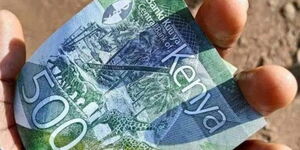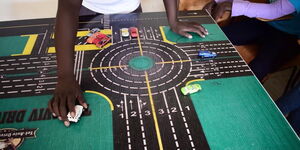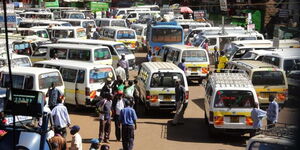Potentially some of the most stable roadworthy vehicles on Kenyan roads, government cars are often seen ruling the highways at high-speed.
At the front and back bumpers, their number plates come in aesthetically prepossessing designs, which are obviously conspicuous to the eye.
Boldly stretched across the plates, GKA, GKB, and GKC are categories of registration that identify government cars.
Speaking to Kenyans.co.ke, the National Transport and Safety Authority (NTSA) explained that the corresponding alphabetical letters following [GK] are a category of series designated during registration.
The authority delineated that the series are provided on a first come, first serve basis, and do not necessarily belong to a specific state department.
Whether there was any speciality about the number plates, namely, GKA, GKB and GKC, NTSA noted that it was nothing more than a category in registration.
"It's just a registration number," NTSA explained while responding to the question of the status symbol in the series of number plates.
According to NTSA, the series are expending and soon, Kenyans will see other denominations on government vehicles -- probably a GKD.
The Kenya National Bureau of Statistics (KNBS) data showed that the NTSA registered 107,499 units in 2022 from 94,128 in 2021.
KNBS data indicates that most registered vehicles were imported from other countries, including Japan, the United States and the United Kingdom.
Previously, motor vehicle registration was a complex process that involved a number of activities both on the part of the buyer, seller and government.
The first vehicle registration in Kenya was done in 1920 when colonial masters adopted a simple numbering system.
Back then, motor vehicles were registered by their district numbering, according to the letters given by colonial masters.
Presently, number plate registration is in various designations, including civilian, National Government, County Government, Diplomats and International organisations.
Civilian number plates are white at the front and yellow at the back, and all have a black colour on the letters. These number plates begin with the letter 'K' indicating that the motor vehicle was registered in Kenya, and its details logged by the government.
In some instances, car owners have gone to the extent of customising number plates by their names in a way that distinguishes them from other motorists.
A single personalised number plate will cost a motor vehicle owner some Ksh1 million, which will be paid to the government through NTSA.
The second category of number plate designation is the national government that assumed the letters 'GK' as primary identifiers for all its vehicles.
Third level number plate designation is on County Government vehicles that bear the initials [GVN] followed by the county code, in case the Office of the Governor operates the car.
The rest of the County Government vehicles use [CG] as the official initials for their registration.












